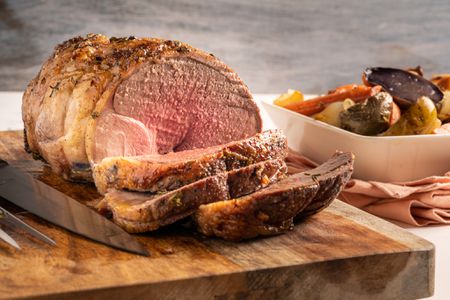



Article by: Hari Yellina
As buyer demand declines, lamb prices have dropped sharply in saleyards around the country. Heavy lamb had dropped 21c in the national indicator over the previous week to 755c/kg, light lamb had lost 17c to 765c, and trade lamb had lost 18c to 771c/kg at the close of trade on Monday. Mutton rose 23 cents to 568 cents, restocker lamb rose 5 cents to 865 cents, and Merino lamb rose 3 cents to 683 cents. All national indicators saw price declines compared to the previous year, ranging from 46c for heavy lamb to 123c for mutton. Additional volumes at saleyards, according to Thomas Elder Markets analyst Matt Dalgliesh, are affecting price.
“By May, we should see the weight on prices begin to lessen… “I wouldn’t be surprised if we’re about a month away from the market bottoming out for the season, and then we start climbing into the winter time, when supplies are few and competition is fierce,” he said. Victorian lamb yarding levels have risen to almost 70,000 head in the last fortnight, according to Mr Dalgliesh. “According to the five-year trend, these levels are about 36% greater than the normal pattern seen during this time of the season,” he said. “Producers want to offload before the Easter break and the Anzac Day interruption to saleyards and the processing industry.”
Over the last fortnight, higher Victorian lamb volumes have pushed east coast lamb yarding levels to roughly 20% over the regular seasonal pattern. The price drops, according to MLA market research analyst Ripley Atkinson, are due to lower customer demand from processors due to labour shortages. As a result of it, a number of beneficial forward contracts were offered or released in late 2021 or early 2022, and they were immediately subscribed to. “Now that the majority of those contracts have been filled, the processor buyer at the saleyards can be more stringent with the quality of the lambs they buy rather than having to buy large volumes,” says the processor buyer.
Mr. Atkinson predicted that the public holidays in April would result in a significant fall in slaughter throughput. “If you look at the historical data between Easter Monday and Anzac Day each year, it will play a role in pricing, especially in lambs, which we know are a lot more volatile in terms of price movements on a daily basis than the cattle market,” he said. “We’re moving into the next stage of the season, autumn and winter, and we know there are still a considerable number of lambs around that haven’t been processed.”